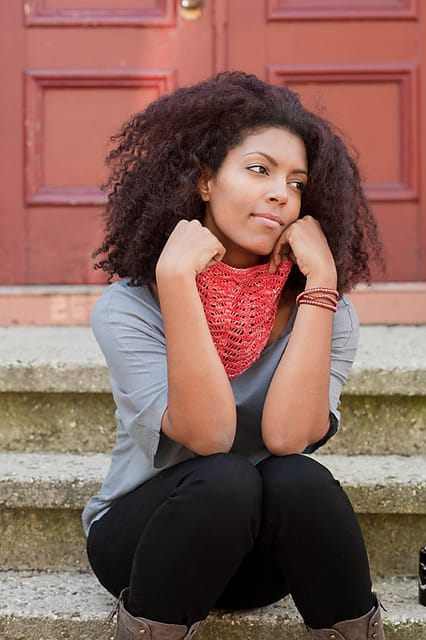Before you start to play with any of the designs Carol Sulcoski has gather in Sock Yarn Studio, take some time to read through Carol’s preface for understanding what constitutes a sock yarn. You also begin to appreciate the absolutely stunning photography that you will find throughout the book. The introductory chapter also covers how Carol has categorized sock yarns for purposes of organizing the patterns. There are solid colors, self-patterning and multicolored each with their unique qualities as you knit.
Now it’s time to start knitting. You will find collections from designers like Wendy D. Johnson, Veronik Avery, Elizabeth Morrison and Franklin Habit. They are organized into chapters entitled One Skein, Two Skeins and Three (or more) Skeins. I love knowing how much yarn projects take right at the beginning without having to do any math.
I like to think of the One Skein chapter as the fiber indulgence chapter. Luxury yarns, special yarns, handspun yarns – anything that is extremely special either because of cost or scarcity.
I’m always looking for cowl patterns, Lisatra is a loose, lacy cowl.
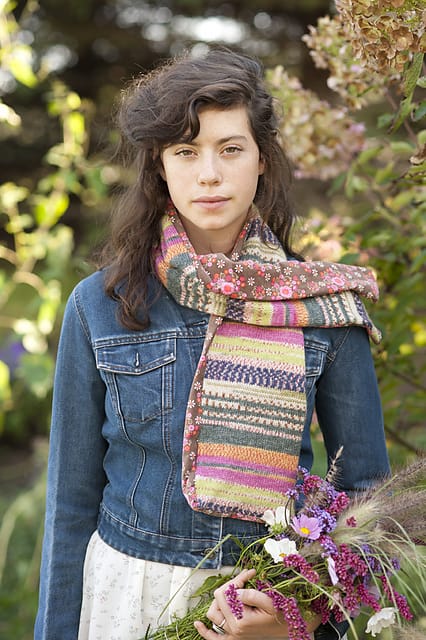
The Calico Scarf is a completely unique way to use self-patterning yarn. I love the vintage look of the fabric backing.
Other one-skein projects include several lovely hits & scarves, a baby cardigan and a pair of stunning gloves – Deux Violettes Gloves.
Moving on to the Two-Skein chapter…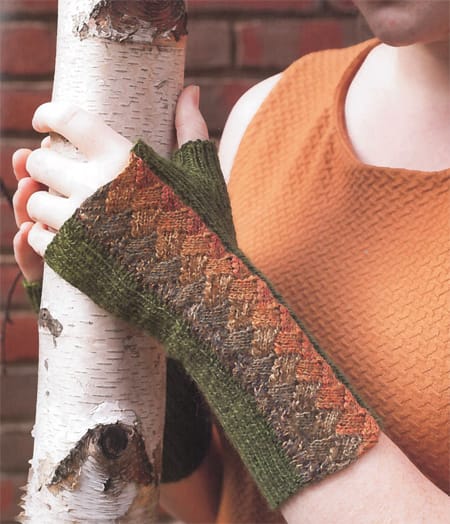
…I fell in love with the Thornapple Wrist Warmers. What a great way to highlight a lovely hand-dyed yarn. Sort of a one-plus-one makes a two-skein project. Oddly enough, I’ve always thought of using up sock yarn in matching groups. This book opened my mind to mixed yarn possibilities.
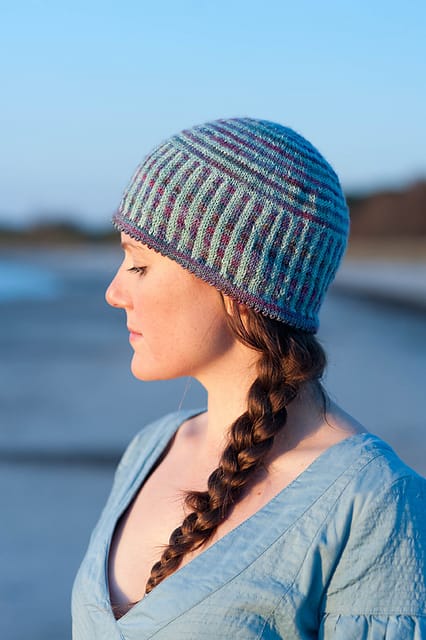
Two different yarns are also used for the Fair Isle Peacock Hat, Roxy Legwarmers, The Kittch Mittens, the Cushington Square Pillow, the Gumdrop Raglan for a child and the Alexander Street Hat (shown above).
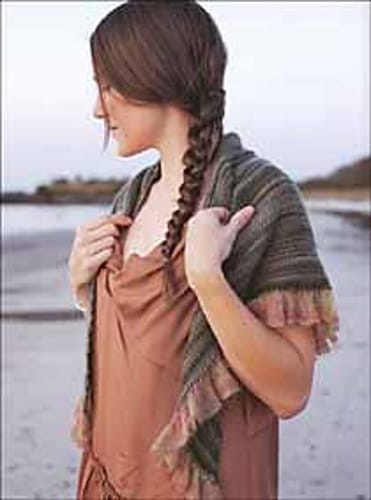
The triangular Furbelow Shawl is my favorite with the ruffled edge made in a coordinating yarn. This shawl would be ideal for the luxurious sock yarn you couldn’t resist like the white 100% angora yarn I bought at the first sock summit. Maybe ruffled with a subtly hand-dyed yarn.
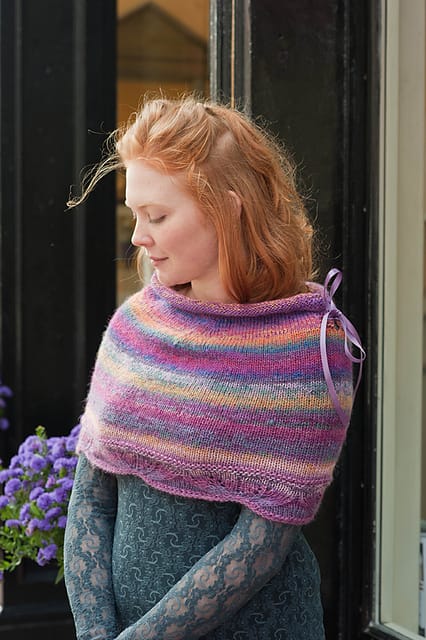
Having three or more skeins lets designers approach sock yarns in quite inventive ways. The Bliss Capelet is knit hold to strands together to pump up the gauge. It uses a combination of sock yarns that change colors gradually.

Ok, the Varese Shawl is brilliant!! Sock knitters are always wondering what to do with the small balls of leftover yarn. This Faroese-style shawl begins with a regular skeins of solid-colored sock yarn and finishes with an edge using stripes of leftover sock yarn. You would think it would look clownish but it turns out to be quite elegant. Enough to inspire me to organize my leftover sock yarn better.
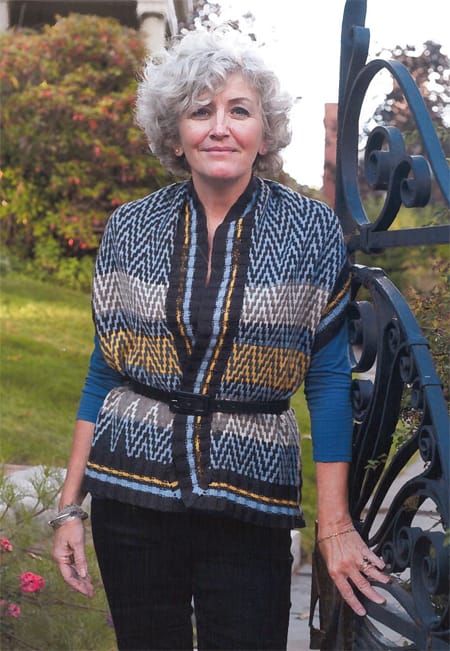
My hands down favorite project is the Nuit Blanche Stole and Scarf. The fabric is made using a slip stitch pattern. The scarf is knit with a solid yarn and a hand-painted yarn. but, I want to make the stole that is also modeld as a belfted tabard vest. The stole, or vest, is knit with six different solid colored yarns. I love the zig-zag slip stitch pattern and the striped edging.
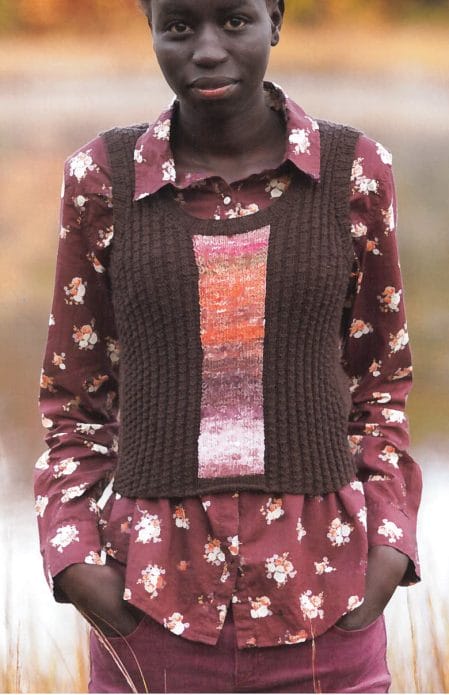
The Newkirk Intarsia Vest is also tempting. I like the colorful vertical front panel knit with a hand-dyed yarn framed by the the rest of the solid colored yarn. The rib pattern in the front builds in a flexible fit.
That’s a lot of potential from small balls of sock yarn! What a lovely collection of inspirational projects!




